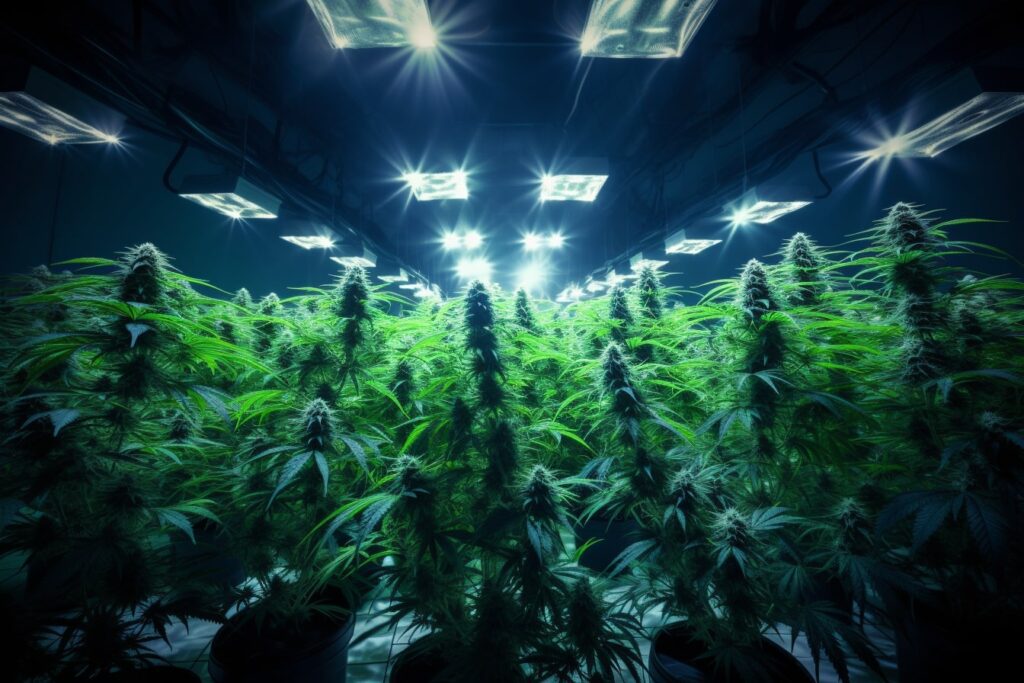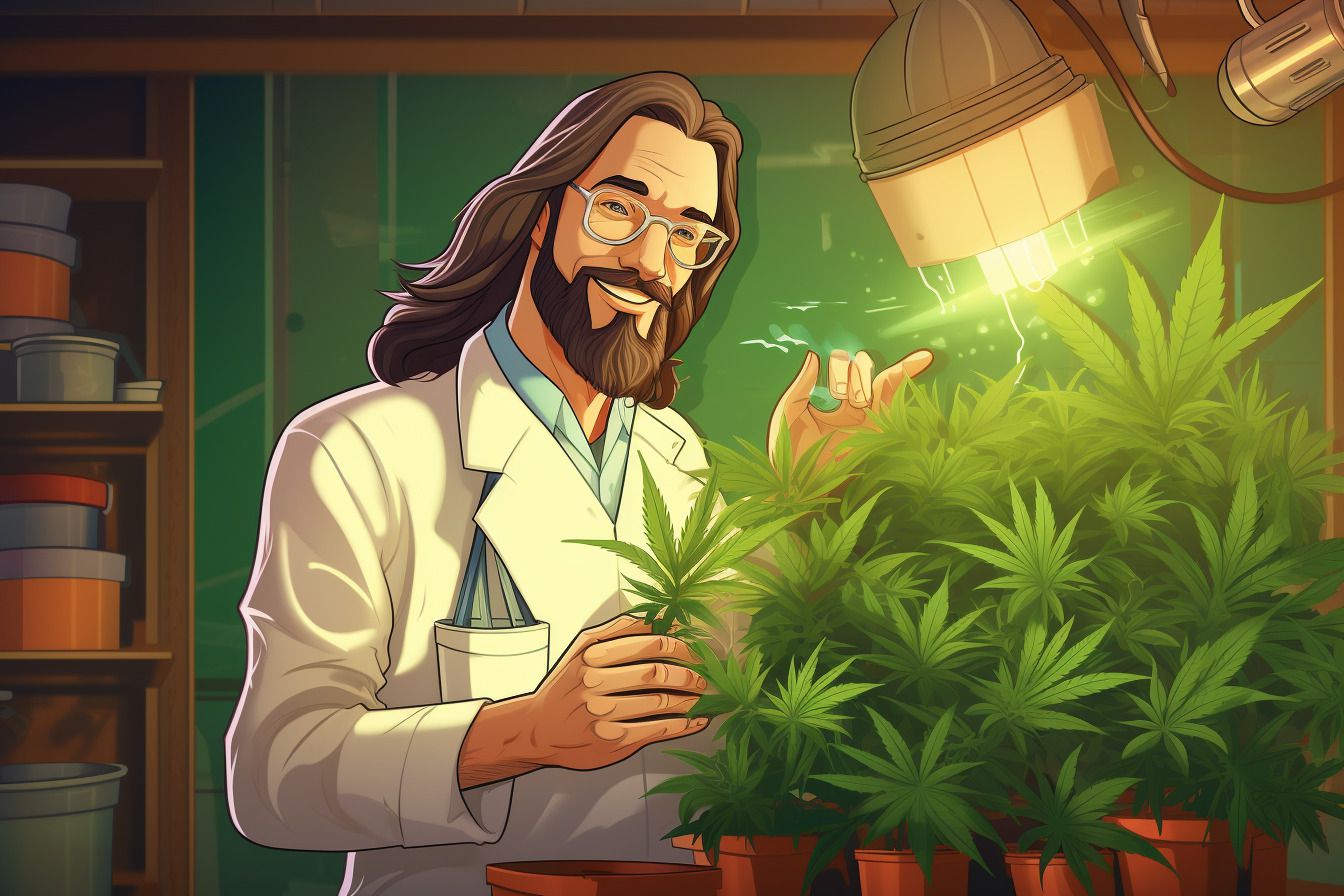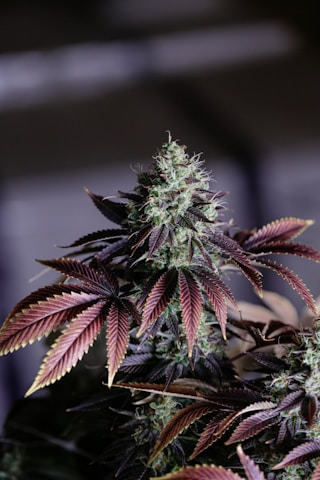
Light is a crucial element for the growth and development of cannabis plants. It plays a vital role in photosynthesis, the process by which plants convert light energy into the chemical energy needed to fuel their growth. Without the right amount of light, cannabis plants may struggle to thrive, leading to lower yields and reduced potency. So, how can you ensure that your cannabis plants receive the optimal light requirements for healthy growth and maximum yield?
That’s where this guide comes in! We’ve created this ultimate guide to help cannabis enthusiasts like yourself achieve the best possible results by optimizing light requirements for your plants. By following the tips and advice in this guide, you’ll be well on your way to growing the finest cannabis plants possible.
Our tone throughout the guide is casual, friendly, and informative. We aim to make this content accessible to a wide audience of cannabis enthusiasts, whether you’re a seasoned grower or just starting your journey into cannabis cultivation. So, let’s dive in and explore the world of cannabis lighting!
Understanding Cannabis Light Requirements
Different Stages of Cannabis Growth and Their Light Needs
Cannabis plants go through three main stages of growth, each with specific light requirements. These stages are:
- Seedling stage: During this stage, young cannabis plants require gentle light to establish a strong root system. A lower intensity light, such as a fluorescent or low wattage LED, is ideal for seedlings.
- Vegetative stage: As cannabis plants grow larger, they need more light to support their increased energy needs. This stage requires more intense light to promote strong, healthy growth and prepare the plants for the flowering stage. Blue light is particularly beneficial during this stage.
- Flowering stage: When cannabis plants start producing flowers, their light requirements change once again. They need even more intense light, with a focus on red wavelengths, to support flower development and maximize yield.
Photoperiod vs. Autoflowering Cannabis Varieties
There are two main types of cannabis plants when it comes to light requirements: photoperiod and autoflowering varieties. Understanding the differences between these types is key to providing the right light conditions for your plants.
- Photoperiod plants: These cannabis varieties rely on specific light cycles to transition from the vegetative stage to the flowering stage. They typically require 18 hours of light and 6 hours of darkness during the vegetative stage and 12 hours of light and 12 hours of darkness during the flowering stage. Photoperiod plants can be more sensitive to changes in light, so it’s crucial to maintain consistent light cycles.
- Autoflowering plants: Unlike photoperiod plants, autoflowering varieties do not rely on light cycles to initiate flowering. Instead, they begin flowering automatically after a set period of time, usually 2-4 weeks after germination. Autoflowering plants generally require less intense light and can thrive under a consistent 18-20 hours of light per day throughout their entire lifecycle.
Light Spectrum and Its Impact on Cannabis Growth
The light spectrum plays a crucial role in cannabis growth and development. Different wavelengths of light have different effects on plants, with blue, red, and full-spectrum light being particularly important for cannabis cultivation.
- Blue light: Blue light promotes vegetative growth, helping cannabis plants develop strong stems and lush foliage. This wavelength is particularly important during the vegetative stage, when plants need to build a solid foundation for future growth and flower production.
- Red light: Red light is essential for the flowering stage of cannabis growth. It triggers the production of flowering hormones and helps plants develop larger, more potent flowers. Providing cannabis plants with ample red light during the flowering stage can significantly increase yields.
- Full-spectrum light: Full-spectrum light provides a balance of both blue and red wavelengths, along with other colors in the visible spectrum. This type of light is ideal for overall growth and development, as it closely mimics the natural light conditions that cannabis plants would experience outdoors.
Choosing the Right Grow Light for Your Cannabis Plants
Types of Grow Lights
There are several types of grow lights available for cannabis cultivation, each with its own unique benefits and drawbacks. Some of the most common grow light options include:
- Fluorescent lights (CFLs and T5s): Compact fluorescent lights (CFLs) and T5 fluorescent tubes are affordable, energy-efficient, and produce low heat. They are best suited for seedlings, clones, and small-scale grows, but may not provide the light intensity needed for larger plants or the flowering stage.
- High-Intensity Discharge (HID) lights (MH and HPS): Metal halide (MH) and high-pressure sodium (HPS) lights are extremely bright and intense, providing excellent light penetration and coverage. MH lights are ideal for the vegetative stage, while HPS lights work best during flowering. However, HID lights can be expensive, consume more energy, and produce a significant amount of heat.
- Light Emitting Diodes (LEDs): LED grow lights are energy-efficient, produce less heat, and can provide a full light spectrum for optimal cannabis growth. They have a longer lifespan compared to other grow light types, but can be more expensive upfront.
- Ceramic Metal Halide (CMH) lights: CMH lights are similar to HID lights but use ceramic technology, resulting in a more balanced light spectrum and improved energy efficiency. They produce less heat than traditional HID lights but can still be pricey.
Read: Guide to LED lights for growing cannabis
Factors to Consider When Choosing a Grow Light
When selecting the right grow light for your cannabis plants, consider the following factors:
- Cost: Different grow lights come with varying price tags. Consider your budget and the long-term costs associated with each type, such as energy consumption and bulb replacement.
- Energy efficiency: More energy-efficient grow lights will save you money on your electricity bill in the long run. LEDs and fluorescent lights are generally the most energy-efficient options.
- Heat output: Excessive heat can harm your cannabis plants, so it’s important to choose a grow light that manages heat effectively. LEDs and fluorescents produce less heat than HID and CMH lights.
- Light penetration and coverage: Ensure your grow light provides adequate light coverage for the size of your grow space and can penetrate the canopy to reach all parts of your plants.
- Light spectrum: Look for grow lights that provide a balanced light spectrum, with an emphasis on blue and red wavelengths for optimal cannabis growth.
Recommendations for Different Grow Setups and Budgets
Here are some general recommendations based on different grow setups and budgets:
- Small-scale grows and tight budgets: For beginners or those working with limited space, CFLs or T5 fluorescent lights can be a cost-effective and low-heat solution.
- Medium-sized grows: If you have a bit more room and budget, consider upgrading to an LED or CMH grow light for increased energy efficiency and light intensity.
- Large-scale grows and advanced growers: For those with ample space and experience, a combination of HID lights (MH for vegetative growth and HPS for flowering) or high-quality LED grow lights can provide the best results and highest yields.
Setting Up Your Cannabis Grow Space for Optimal Lighting
Ensuring Proper Light Coverage and Penetration
Setting up your cannabis grow space for optimal lighting involves several factors, such as positioning your grow lights, adjusting light height, and using reflective materials. Here’s how to get started:
- Positioning your grow lights: Place your grow lights directly above your plants to ensure even light distribution and prevent shadowing. You may need multiple lights for larger grow areas to provide adequate coverage.
- Adjusting light height throughout growth stages: As your plants grow, you’ll need to adjust the height of your grow lights to maintain the appropriate distance between the light source and the top of your plants. This distance will vary depending on the type of light you’re using and the growth stage of your plants. Follow the manufacturer’s recommendations for optimal light height.
- Reflective materials to maximize light efficiency: Utilize reflective materials on the walls and ceiling of your grow space to help bounce light back onto your plants, increasing overall light coverage and penetration. Some popular reflective materials include Mylar, white paint, or specialized reflective films.
Managing Heat and Humidity
Maintaining a proper growing environment is essential for healthy cannabis plants. Heat and humidity management play a crucial role in your grow space:
- Ventilation systems: A well-designed ventilation system helps regulate temperature and humidity in your grow space, preventing issues such as mold and heat stress. Use exhaust fans to remove hot air, and intake fans to bring in fresh, cool air. Consider using a carbon filter to help control odors.
- Air circulation and temperature monitoring: Use oscillating fans to help circulate air within your grow space, promoting even temperature distribution and reducing the risk of hotspots. Monitor the temperature and humidity levels in your grow space using a digital thermometer and hygrometer to ensure optimal growing conditions.
Light Cycles and Scheduling
Proper light cycles and scheduling are essential for cannabis plants to thrive, with different requirements for photoperiod and autoflowering varieties:
- Photoperiod plants’ light cycle during vegetative and flowering stages: Photoperiod plants typically require 18 hours of light and 6 hours of darkness during the vegetative stage, and 12 hours of light and 12 hours of darkness during the flowering stage. Use a timer to maintain consistent light cycles and prevent disruptions that could stress your plants.
- Autoflowering plants’ light cycle: Autoflowering plants do not rely on light cycles to initiate flowering and can generally thrive under a consistent 18-20 hours of light per day throughout their entire lifecycle. This allows for more flexible scheduling and can save energy compared to photoperiod plants.
Troubleshooting Common Cannabis Light Issues
Signs of Light Stress and How to Address Them
Light stress can negatively impact the health and yield of your cannabis plants. It’s crucial to identify and address these issues promptly. Here are some common signs of light stress and how to fix them:
- Light burn: Light burn occurs when your grow lights are too close to your plants, causing the leaves to turn yellow or brown and curl upwards. This can stunt growth and reduce yields. To fix this issue, increase the distance between your grow lights and plants, or reduce the intensity of your lights if possible.
- Light deficiency: Insufficient light can lead to weak, leggy plants with thin stems and small leaves. This can result in reduced yields and lower potency. To address light deficiency, ensure your grow lights are providing adequate coverage and intensity for your plants, and consider upgrading to a more powerful light source if necessary.
Adjusting Light Intensity and Duration for Optimal Growth
Striking the right balance between light intensity and duration is essential for healthy cannabis growth. Here are some tips to help you optimize your lighting setup:
- Monitor your plants’ response to your current lighting conditions. Look for signs of light stress or deficiency and adjust accordingly.
- Keep in mind the specific light requirements of your cannabis variety, as well as the different light needs during each stage of growth.
- Experiment with different light heights, intensities, and durations to find the ideal balance for your specific grow space and cannabis plants. Remember that it’s better to make small adjustments and observe their effects rather than making drastic changes all at once.
- Consider using a light meter to accurately measure the intensity of your grow lights and ensure optimal coverage and penetration for your plants.
Conclusion
In this guide, we’ve covered the importance of optimizing light requirements for cannabis plants to achieve maximum yield and potency. By understanding the different stages of cannabis growth, the unique light needs of photoperiod and autoflowering varieties, and the impact of light spectrum on plant development, you can make informed decisions about the best lighting setup for your grow space.
Remember that every grow space and cannabis variety is unique, so don’t be afraid to experiment with different grow lights, light heights, and intensities to find the perfect balance for your plants. With a little time and effort, you can create an optimal lighting environment that promotes healthy growth and maximizes yield.
As we like to say, “If everyone smoked cannabis, the world would be a better place.” So let’s continue to work towards that goal by growing the best cannabis possible with the right lighting. And if you’re looking for top-quality seeds and expert advice, our website is here to help you every step of the way!







